
VeaYA.
Hybrid Mobile-VR System.
Designed to fill a low-to-mid range VR market niche, VeaYA takes the affordability of 'mobile-VR' and seeks to incoorperate elements of 'all-in-one' VR, in order to create an experience comparable to products many hundereds of dollars more expensive than itself.
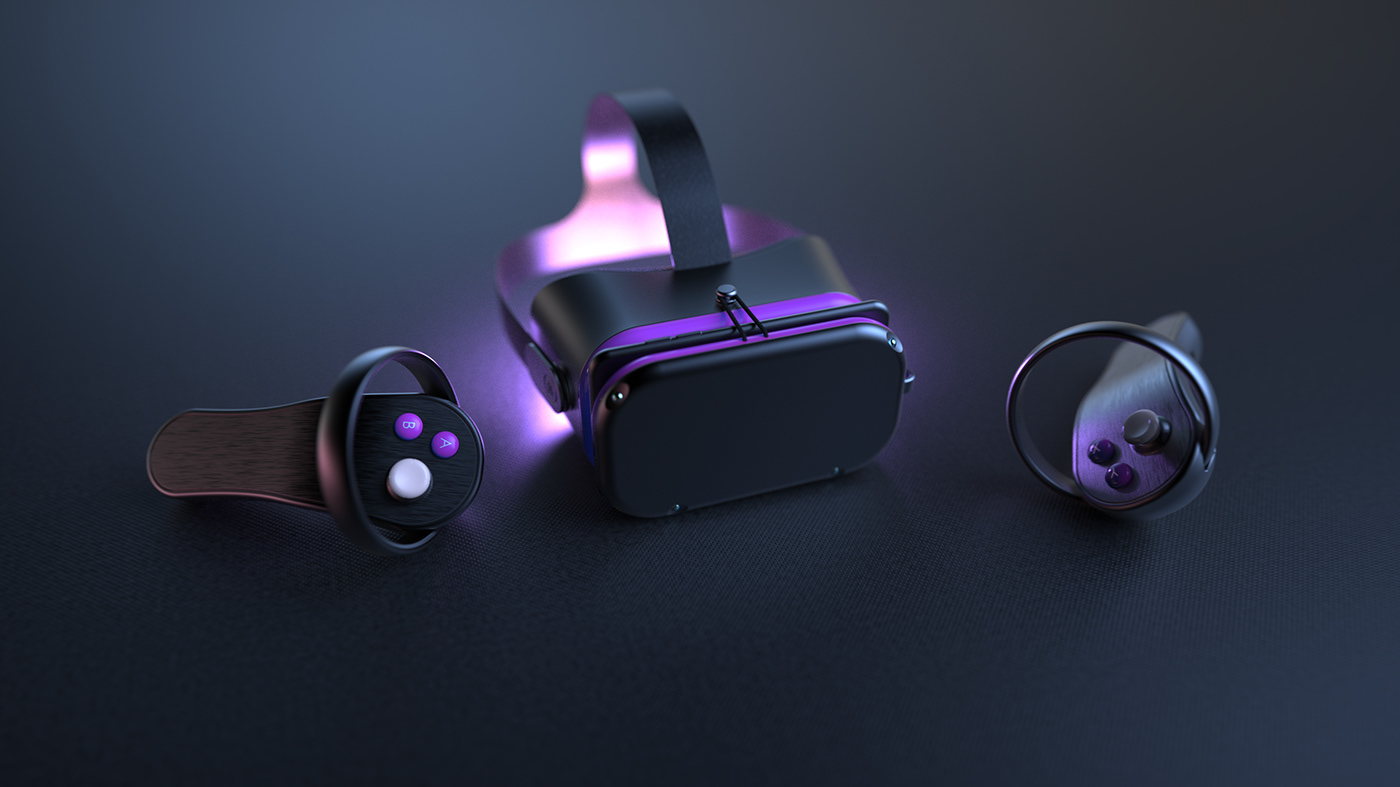
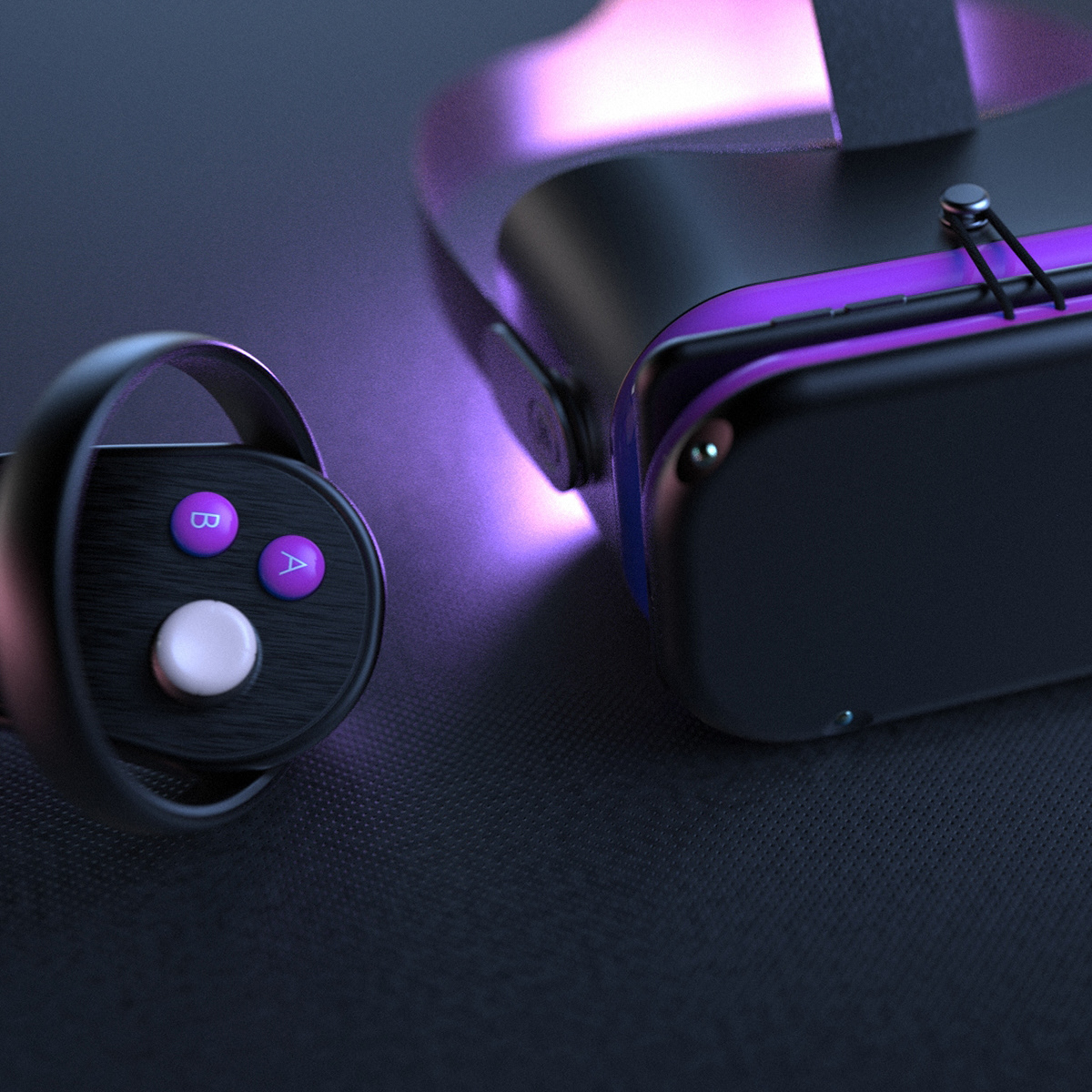
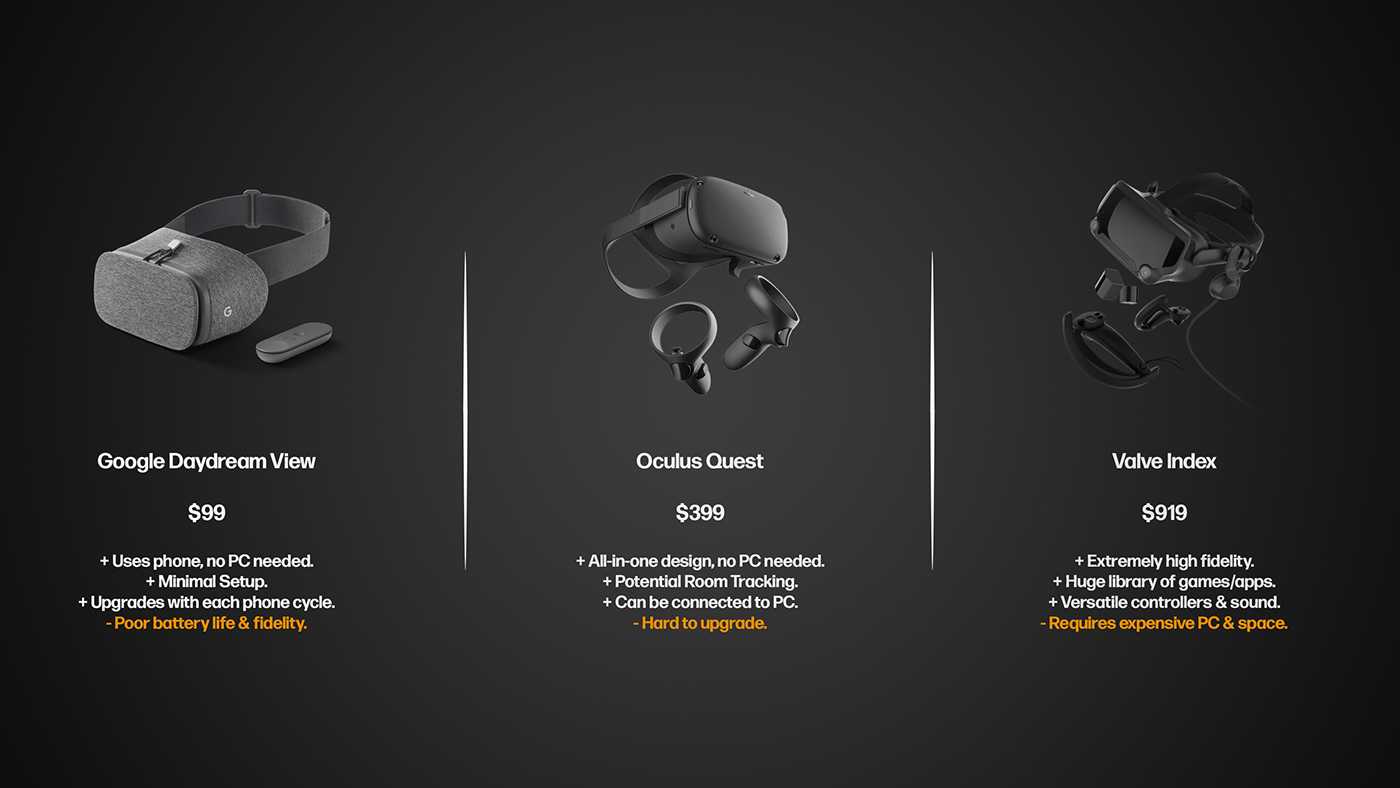
The crucial aim with the project was to try and increase the quality of lower-cost VR systems. The price-floor for what most consumers would consider a suitable level of VR-fidelity (the Oculus Quest being a benchmark of price/quality) still runs into the hundereds of dollars. VeaYA attempts to lower the barriers to entry further by combining the practical and affordable elements of low-end mobile-VR, and the fidelity that comes with some of the more premium VR setups.
The 'hybrid' element of the design relates to the way a user's smartphone makes up much, but not all of the electronic architecture in the VR headset; leveraging both the phone's high-fidelity screen and mobile-performance to handle the portable-VR computation.
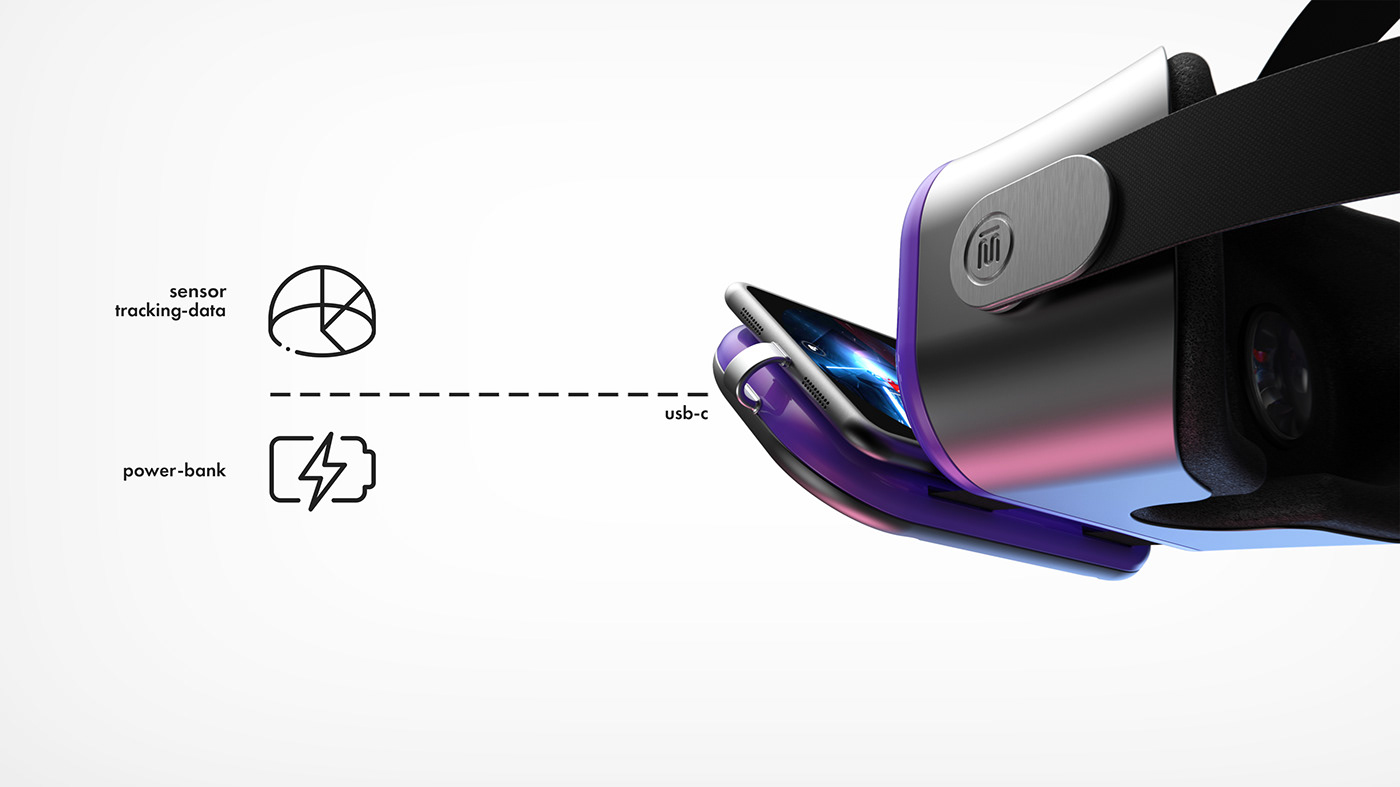
The front housing of the HMD contains the other half of the electronic elements, that are designed to counteract some of the issues with a 'phone-VR' setup: namely containing a power-bank to prevent draining the phone's battery too quickly, and tracking sensors comparable to that used in the Oculus Quest; transferring their raw data via USB C to the phone, allowing for everything from room-scale tracking, to controller-tracking, to hand-tracking and everything in-between.
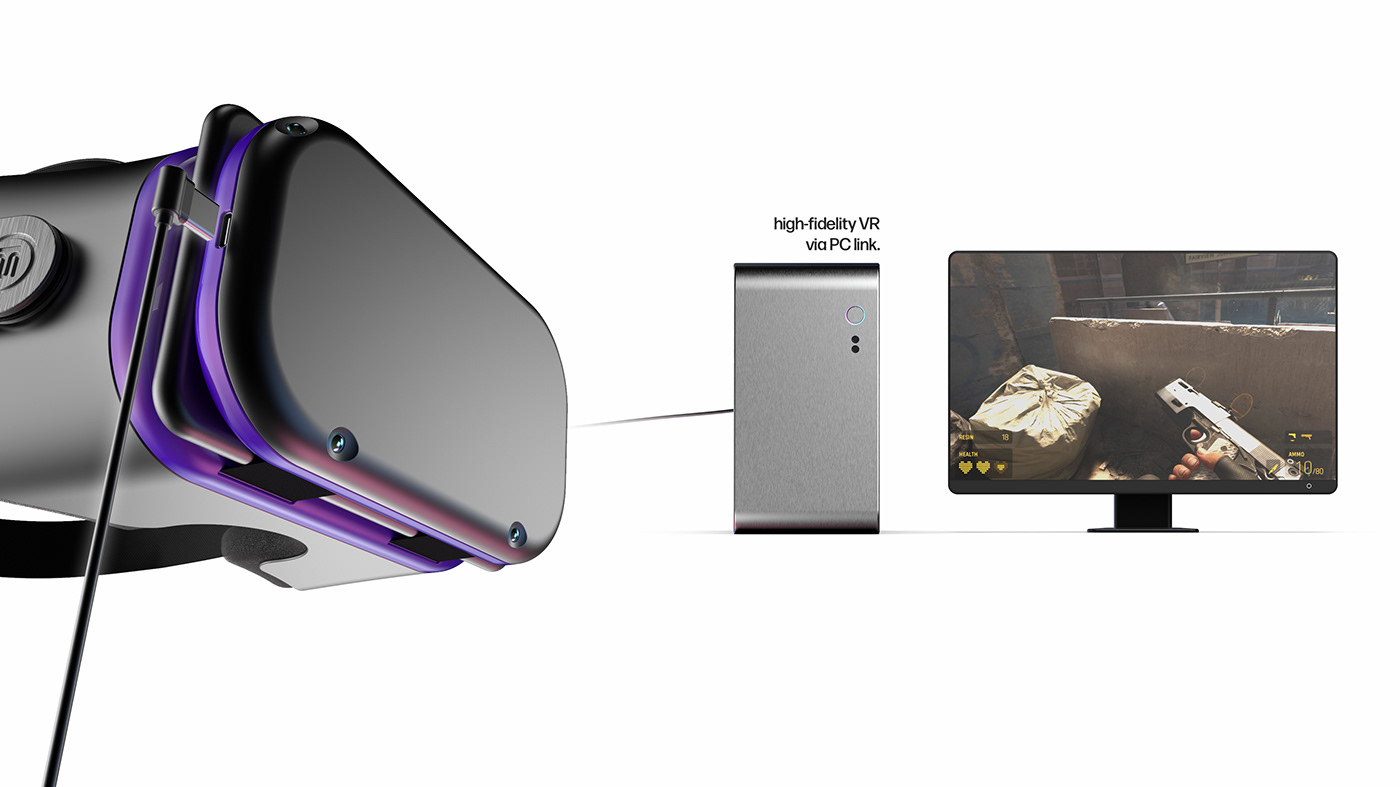
Much like the Oculus Link feature, connecting the front panel to a high-end PC via a seperate USB-C bypasses using the phone's limited performance completely, essentially turning the headset into something comparable to a tradiational VR headset. It wouldn't be as high-fidelity as the premium VR headset models; but aside from likely being cheaper than the Oculus Quest, the VeaYA also boasts the unique ability to easily be upgraded as a natural result of a user purchasing a newer phone model.

Aesthetically, as is the case with much of the design, I wanted to emphasise how VeaYA is meant to walk the line between the Daydream and Quest markets, borrowing a few elements from either design that showcase a mix of casual and professional; I also added some more retro elements and colours inspired from the arcade and NES/SNES era gaming periods to add a little unique flair, but to also act as a counterpoint to some of the more clinical designs seen in current products. As a fortunate consequence this also meant having large, friendly controller buttons, meaning they'll be easier to find whilst in VR.
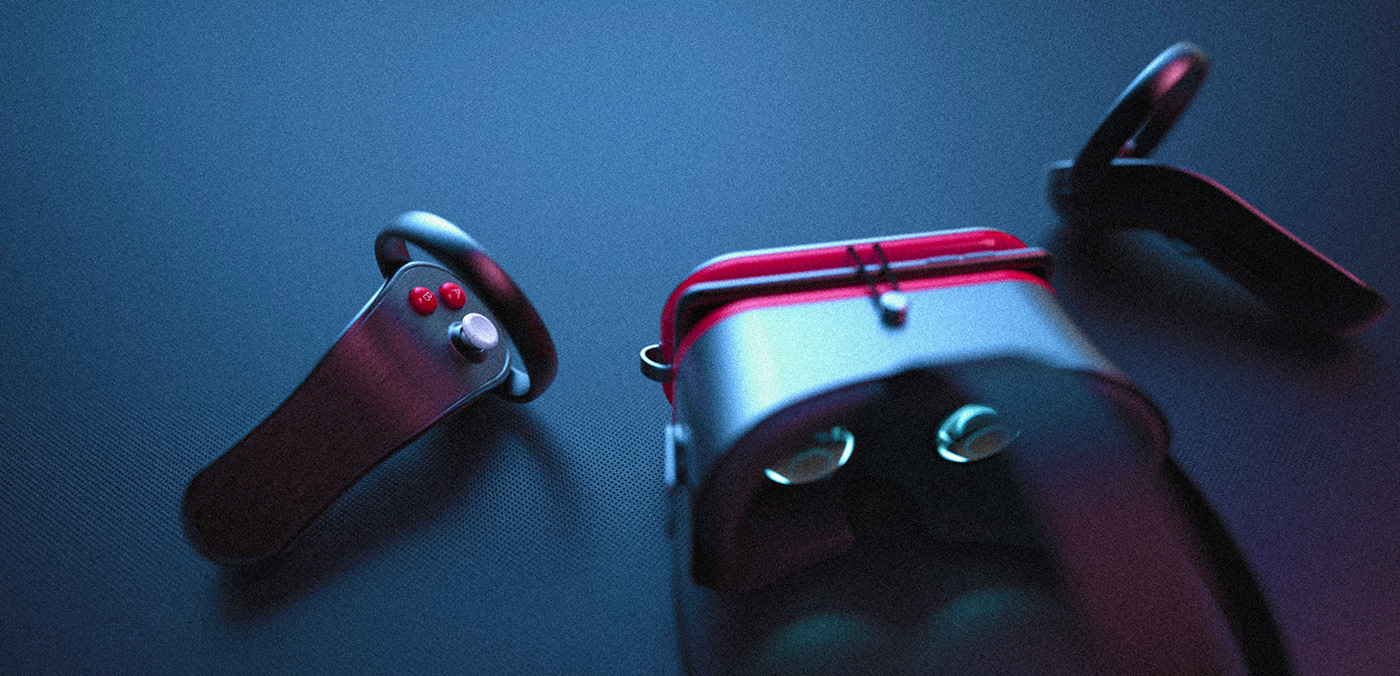
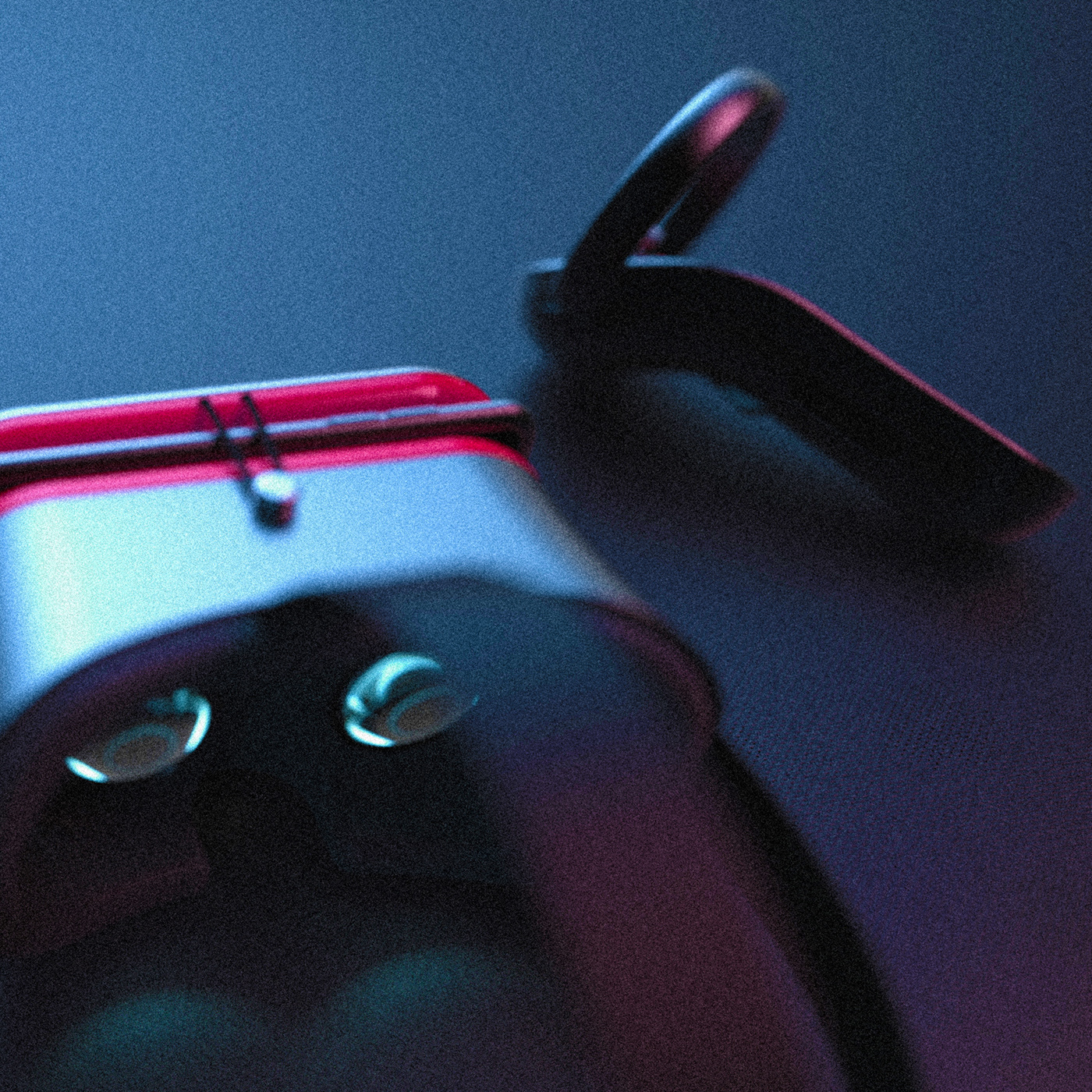
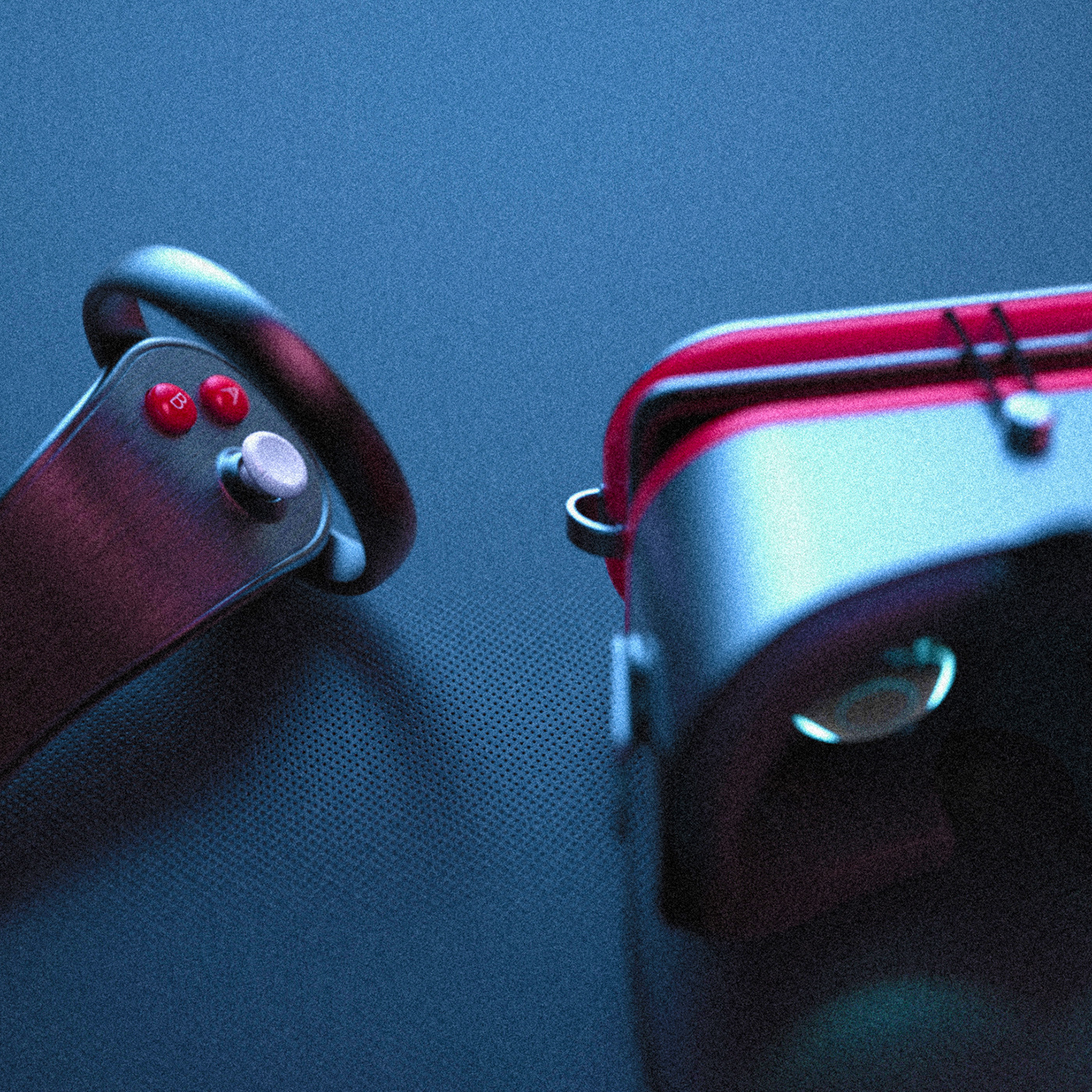
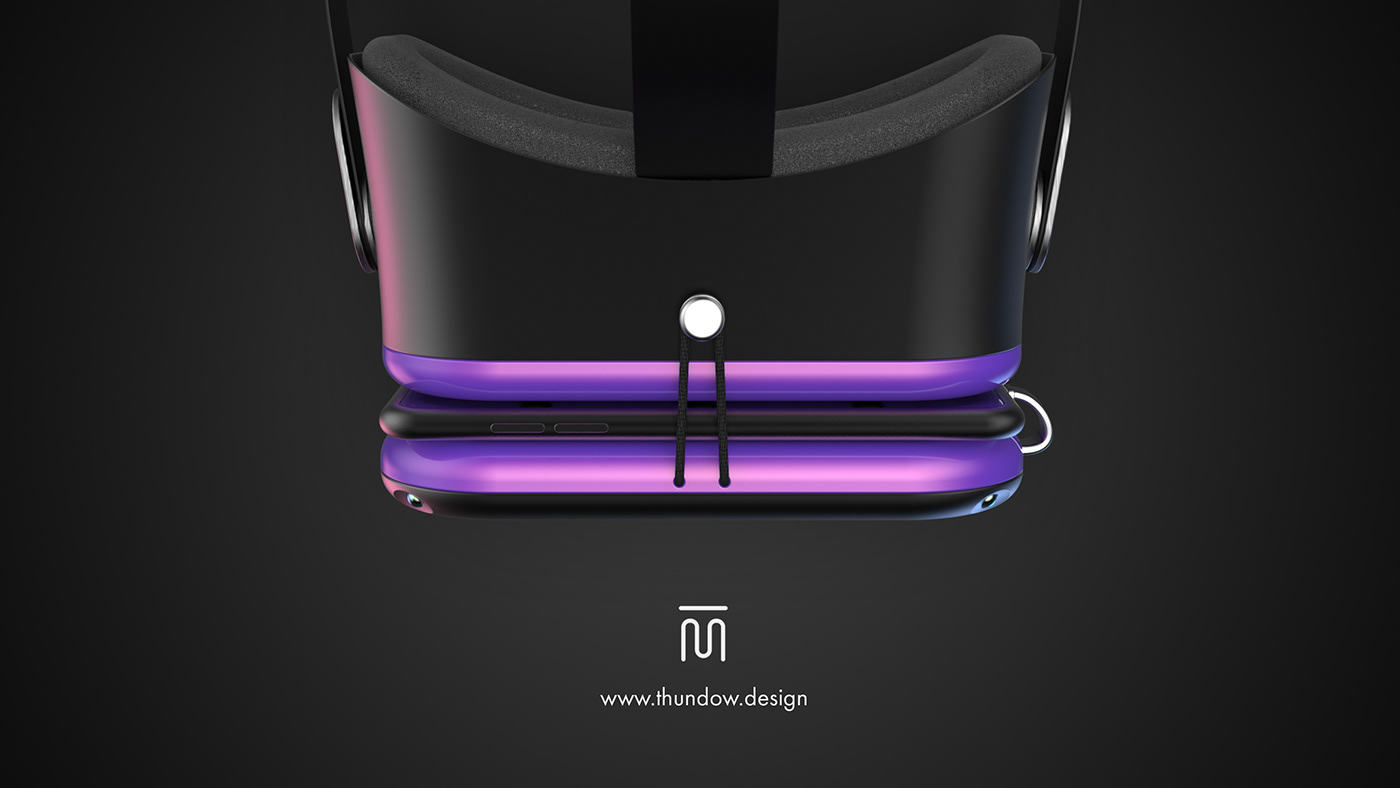
*This was a quick-and-rough concept, so there's a huge number of things I'd love to develop/fix in the future; from little things like a few more features/buttons on the controllers, to very glaring ommisions such as seemingly no way to adjust the headstrap, lens distance or pupil distance. However this was made the idea that this was agiven a future iterations, and that the concept was more to visualise the 'hybrid' elements of the product.
Icons from FlatIcon: SmashIcons, Becris, Freepik, PrettyCons, PixelPerfect.


